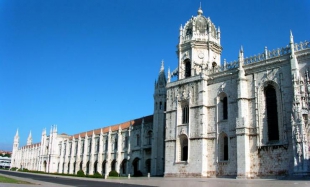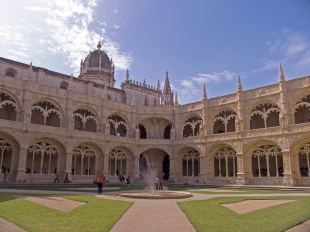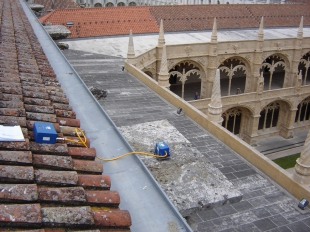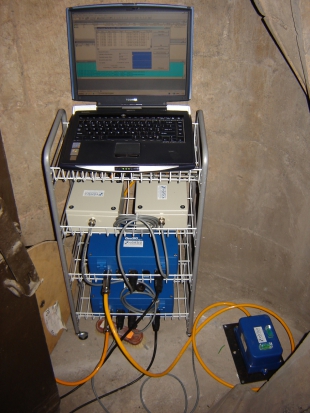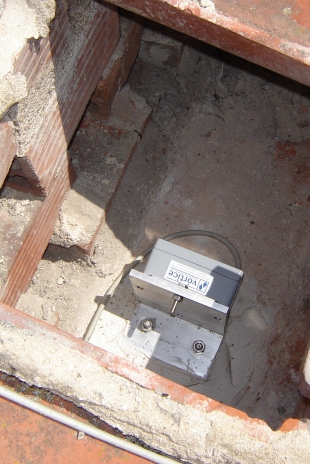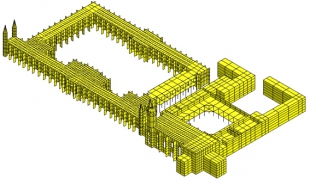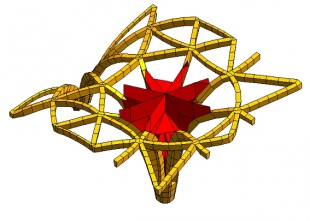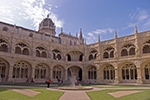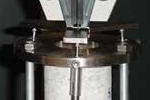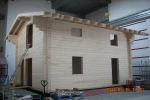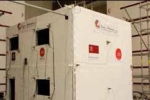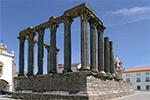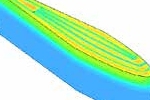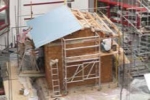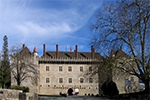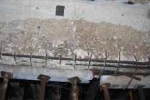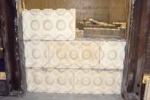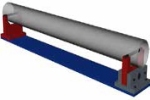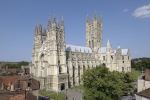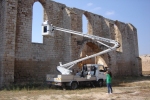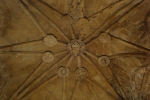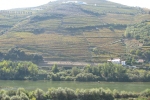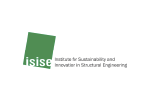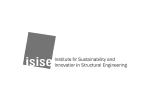Church and Monstery of Jerónimos (Lisbon)
Visual inspection, non-destructive testing, dynamic test, monitoring and seismic analysis of the monastery and S. Maria de Belém church.
Objectives
The objective was to contribute to the conservation and structural assessment of Jerónimos Monastery, Lisbon. Several structural analysis were carried out, namely: visual inspections, non-destructive testing with sonic and GPR, dynamic modal identification tests, static and dynamic analysis e different numerical analysis based on finite element models.
Description
Monastery of Jerónimos is, probably, the crown asset of Portuguese architectural heritage. The construction of the monastery started in 1499 or 1500. The monastery is built with limestone (usually denoted by ‘‘lioz’’ type) quarried locally in Ajuda, Alcantara Valley, Laveiras, Rio Seco and Tercena. The church of the monastery, Santa Maria de Belém church, has considerable dimensions: a length of 70 m, a width of 40m and a height of 24 m.
Since April of 2005, a dynamic monitoring system was installed in the church. The monitoring system is composed of two strong motions recorders connected by an enhanced interconnection network, which allows a common trigger and time programmed records. The dynamic monitoring system is complemented by a static one, which measures temperatures and rotation of the columns at several points in the structure, as well as environmental parameters, such as relative air humidity and wind velocity.
Beyond monitoring, visual inspections of several buildings of the monastery, including the roofs, and non-destructive testing performed essentially in the columns of the nave of the church were held. These works helped to understand the structural condition and the behavior of structural elements, revealing a fundamental issue for structural analysis using advanced models.
The first advanced model analysis was carried out focused in the behavior of the full monastery compound under seismic loading. The reason for this is the high hazard level in the region of Lisbon and the high cultural value of the monument. This analysis was followed by a detailed analysis of the church, to better analyze the structural response of the main nave, transept, and columns.
Results
The results obtained from the different inspection works, tests and monitoring were important for understanding the monastery structural behavior. Advanced modeling was necessary for understanding the behavior and damage of such (complex) historical construction. It was stressed that remedial measures in cultural heritage buildings require an iterative approach, aiming at gathering the information necessary to issue a proper judgment.

